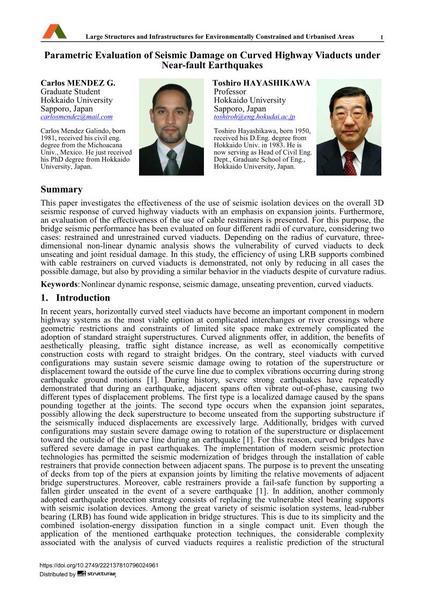Parametric Evaluation of Seismic Damage on Curved Highway Viaducts under Near-fault Earthquakes

|
|
|||||||||||
Bibliographic Details
| Author(s): |
Carlos Mendez G.
Toshiro Hayashikawa |
||||
|---|---|---|---|---|---|
| Medium: | conference paper | ||||
| Language(s): | English | ||||
| Conference: | IABSE Symposium: Large Structures and Infrastructures for Environmentally Constrained and Urbanised Areas, Venice, Italy, 22-24 September 2010 | ||||
| Published in: | IABSE Symposium Venice 2010 | ||||
|
|||||
| Page(s): | 370-371 | ||||
| Total no. of pages: | 8 | ||||
| Year: | 2010 | ||||
| DOI: | 10.2749/222137810796024961 | ||||
| Abstract: |
This paper investigates the effectiveness of the use of seismic isolation devices on the overall 3D seismic response of curved highway viaducts with an emphasis on expansion joints. Furthermore, an evaluation of the effectiveness of the use of cable restrainers is presented. For this purpose, the bridge seismic performance has been evaluated on four different radii of curvature, considering two cases: restrained and unrestrained curved viaducts. Depending on the radius of curvature, three- dimensional non-linear dynamic analysis shows the vulnerability of curved viaducts to deck unseating and joint residual damage. In this study, the efficiency of using LRB supports combined with cable restrainers on curved viaducts is demonstrated, not only by reducing in all cases the possible damage, but also by providing a similar behavior in the viaducts despite of curvature radius. |
||||
| Keywords: |
non-linear dynamic response seismic damage unseating prevention curved viaducts
|
||||
